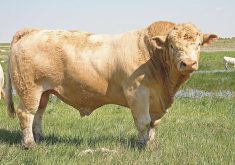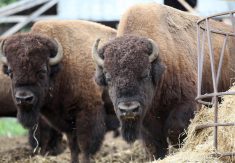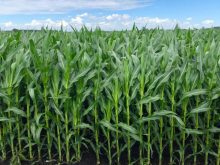The hunt is on for pulses suitable for Alberta conditions.
“Our program is a little different because we do not have a field pea or pulse breeder, per se,” Mark Olson, provincial pulse industry development specialist with Alberta Agriculture, told a recent joint meeting of the Alberta Canola Producers Commission and the Alberta Pulse Growers.
“What we’re doing is using all the programs in Western Canada as well as a number of programs in Europe to screen everything in terms of field pea varieties and fababean varieties to get the best of the best for Alberta growers.”
Read Also

Roundup retraction makes public trust ripples
A foundational study on glyphosate safety was recently retracted, while Roundup maker Bayer has already said it may ditch the key agricultural herbicide after lawsuits piled up.
Researchers are examining seed size, shape, lodging resistance, disease resistance, maturity, yield and yield stability, and anything else that will be of benefit to Alberta pulse growers, said Olson.
This process involves trials and co-operation between breeders in Alberta, Saskatchewan, the Netherlands and Germany. About 35 acres of research plots were seeded in Barrhead, St. Albert, Vegreville, Bow Island, Brooks and Lacombe.
Alberta farmers seeded more pulses this year, he noted.
“The real big news this year is the increase of seeded acres in lentils. We went up by about 250 per cent from 2009,” he said.
There was a lot of white mould on the lentils, but yields were decent and in the 30 bushel-an-acre range.
Dry bean acreage stayed much the same this year. Field peas are mainly grown in the southern region of the province. About 10 varieties of field peas make up 90 per cent of the acreage. Popular varieties include CDC Meadow, which makes up about 19 per cent of the acreage, followed by others including Cooper, Golden, Delta, Admiral and Delta.
“The CDC varieties from the Crop Development Centre at the University of Saskatchewan are definitely creeping into the acreage a lot more than in the past,” said Olson.
CDC varieties make up about 30 per cent of the varieties grown in Alberta.
Regional trials
There were 18 sites for regional trials in the province this year. When producers choose varieties, they tend to look at yield, lodging, maturity, seed size, seed shape, and seed colour and intensity.
“Disease resistance is important but probably not so much on the radar,” he said. “Protein is an interesting one, because we always want high protein but nobody pays for it. You’re seeing the yields go up but the protein on a lot of varieties is going down over time, which may be a concern.”
All the new field pea varieties now contain single-gene powdery mildew resistance.
Alberta Pulse Growers have also been involved in the Western Co-op trials, which test varieties just prior to registration. These trials use different check varieties than the regional trials. When testing varieties, researchers use a number of measurements, including lodging score, seed coat breaking, bleaching score, and seed shape. In 2010, there were 10 yellow peas and four green peas tested regionally.
Growing peas in 2010
It was a challenge to grow peas in 2010 due to high levels of moisture.
“The big thing was lodging. We did see severe lodging and extended maturity,” said Olson.
Alberta lentil acreage was up 250 per cent in 2010 istockphoto.com
Diseases were a major problem this year, especially for producers who were close to the Highway 21 corridor.
“The crop canopy was wet for most of the year and that just leads to disease,” he said. “Moisture usually tapers off by July 15 but this year, it didn’t. In some places, like Barrhead, they didn’t really get any moisture until the middle of August.”
Thin black and black soils, which have a lot of organic matter, were heavily affected by mineralization, which releases nitrogen, phosphorus and sulphate.
“You’re going to have different mineralization of soil based on how much you have,” said Olson. “If we look at cultivated lands and organic matter, and cultivated versus native soils, we can see that the dark brown and black have a lot of organic matter compared to dark grey, grey and brown. It’s not surprising that in those areas, we’re getting more mineralization when we have moisture, which really drives that whole process.”
This year’s mineralization spurred vegetative growth and caused plants to grow extra tall.
Some producers dug into their canopies and found a brown rot called asochyta that starts with a few lesions which then join together.
“Eventually the plants become rotten and there’s not much holding them in place,” he said. “That really affects yield.”
Producers who sprayed once for this problem may have needed to spray two or three times this year in order to combat asochyta, he said.
———
“Whatwe’redoingisusingalltheprogramsinWesternCanadaaswellasanumberofprogramsinEuropetoscreeneverythingintermsoffieldpeavarietiesandfababeanvarietiestogetthebestofthebestforAlbertagrowers.”
MARK OLSON
PULSE INDUSTRY
DEVELOPMENT SPECIALIST















